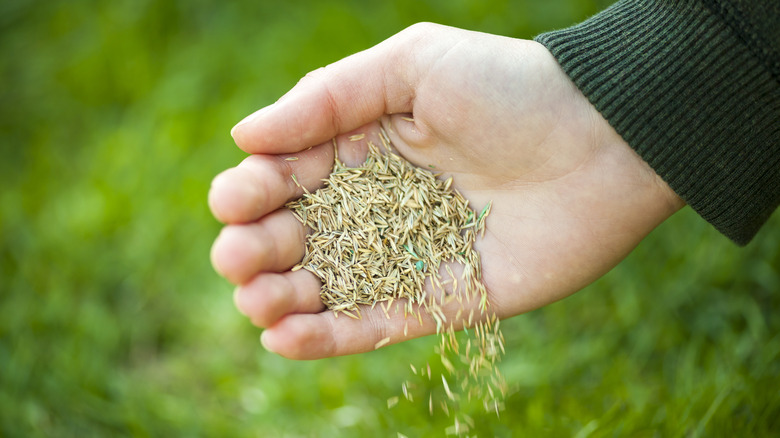The Downsides To Planting Carpetgrass Seed For A Low-Maintenance Lawn
If you're looking to create a low-maintenance lawn, carpetgrass might seem like the perfect choice. It doesn't need heavy fertilizing and it's great if you've got shaded areas where other types of grass struggle. Its creeping growth can also help with erosion if your yard's a bit uneven. Plus, it's known to reduce weed growth and has a good tolerance for challenging soil conditions, particularly soils that are acidic and have low fertility. But carpetgrass isn't perfect — there are some things you'll want to think about before committing to it.
First off, carpetgrass doesn't exactly give you that manicured, golf-course look. It's a little coarser, so if you're someone who loves a perfectly smooth, flawless lawn, this might not be the grass for you. Additionally, its slow growth rate can leave your lawn looking less lush in some spots, which can be disappointing if you're going for that full, green carpet year-round. And while it does well in the shade, it still needs regular moisture. If you live somewhere that experiences dry spells, you might find your grass turning brown pretty quickly.
On top of that, carpetgrass produces tall seed heads that can make your lawn look weedy and messy during the summer. They can be pretty tough and tricky to cut with some mowers. So, before planting carpetgrass, weigh these factors and think about whether it aligns with your goals.
How to care for carpetgrass
If you decide to go ahead and plant carpetgrass despite the downsides, you can still make it work with a bit of care. The most important task is to water your lawn as needed, especially when the weather gets dry. While carpetgrass is more drought-tolerant than some other grasses, it's not invincible. If you don't water it enough, it'll go dormant and turn brown. To keep it looking good, aim to water your lawn with about 1 inch of water per week. This encourages deeper roots, which helps the grass handle dry spells better.
When it comes to mowing, carpetgrass doesn't need as much attention as other grasses, but that doesn't mean you can skip it altogether. Keep it trimmed to around 1½ to 2 inches tall. Cutting it too short will stress it out, while letting it grow too long can make your lawn look messy. Carpetgrass is pretty good at keeping weeds under control on its own, but giving it a regular mow will help keep those stragglers at bay.
As for fertilizing, you don't need to go overboard. Carpetgrass naturally does well in poor soil, so it's low-maintenance in that respect, too. A balanced fertilizer once or twice a year, ideally at the end of spring and again in the fall, should do the trick to keep it healthy.

